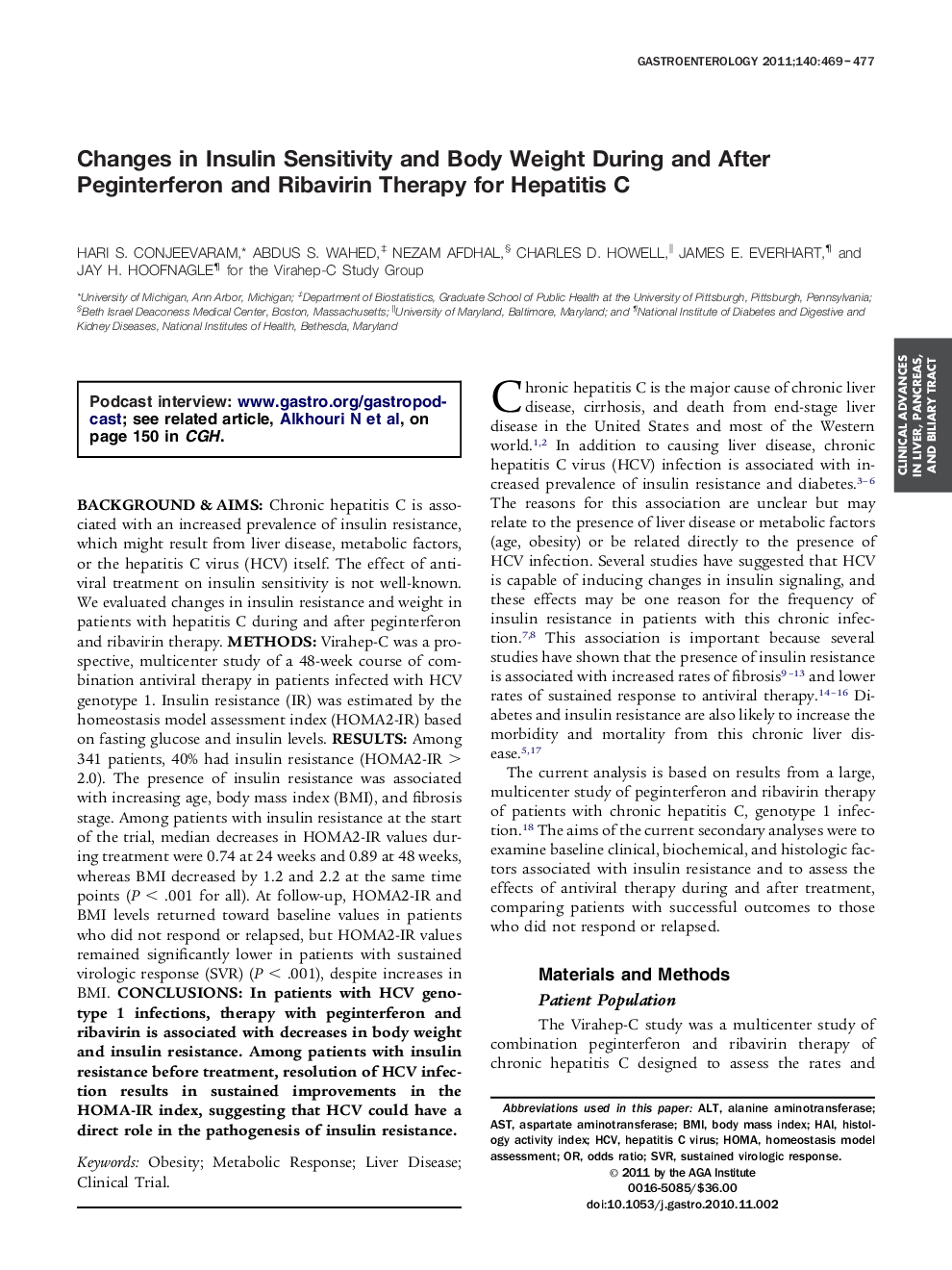| Article ID | Journal | Published Year | Pages | File Type |
|---|---|---|---|---|
| 3297402 | Gastroenterology | 2011 | 9 Pages |
Background & AimsChronic hepatitis C is associated with an increased prevalence of insulin resistance, which might result from liver disease, metabolic factors, or the hepatitis C virus (HCV) itself. The effect of antiviral treatment on insulin sensitivity is not well-known. We evaluated changes in insulin resistance and weight in patients with hepatitis C during and after peginterferon and ribavirin therapy.MethodsVirahep-C was a prospective, multicenter study of a 48-week course of combination antiviral therapy in patients infected with HCV genotype 1. Insulin resistance (IR) was estimated by the homeostasis model assessment index (HOMA2-IR) based on fasting glucose and insulin levels.ResultsAmong 341 patients, 40% had insulin resistance (HOMA2-IR > 2.0). The presence of insulin resistance was associated with increasing age, body mass index (BMI), and fibrosis stage. Among patients with insulin resistance at the start of the trial, median decreases in HOMA2-IR values during treatment were 0.74 at 24 weeks and 0.89 at 48 weeks, whereas BMI decreased by 1.2 and 2.2 at the same time points (P < .001 for all). At follow-up, HOMA2-IR and BMI levels returned toward baseline values in patients who did not respond or relapsed, but HOMA2-IR values remained significantly lower in patients with sustained virologic response (SVR) (P < .001), despite increases in BMI.ConclusionsIn patients with HCV genotype 1 infections, therapy with peginterferon and ribavirin is associated with decreases in body weight and insulin resistance. Among patients with insulin resistance before treatment, resolution of HCV infection results in sustained improvements in the HOMA-IR index, suggesting that HCV could have a direct role in the pathogenesis of insulin resistance.
